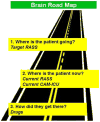Critical care nurses' role in implementing the "ABCDE bundle" into practice
- PMID: 22467611
- PMCID: PMC3375171
- DOI: 10.4037/ccn2012229
Critical care nurses' role in implementing the "ABCDE bundle" into practice
Abstract
Imagine working in an environment where all patients undergoing mechanical ventilation are alert, calm, and delirium free. Envision practicing in an environment where nonvocal patients can effectively express their need for better pain control, repositioning, or emotional reassurance. Picture an intensive care unit where a nurse-led, interprofessional team practices evidence-based, patient-centered care focused on preserving and/or restoring their clients' physical, functional, and neurocognitive abilities. A recently proposed bundle of practices for the intensive care unit could advance the current practice environment toward this idealized environment. The Awakening and Breathing Coordination, Delirium Monitoring and Management, and Early Mobility (ABCDE) bundle incorporates the best available evidence related to delirium, immobility, sedation/analgesia, and ventilator management in the intensive care unit for adoption into everyday clinical practice.
Figures
References
-
- Ely EW, Shintani A, Truman B, et al. Delirium as a predictor of mortality in mechanically ventilated patients in the intensive care unit. JAMA. 2004;291(14):1753–1762. - PubMed
-
- Lin S, Liu C, Wang C, et al. The impact of delirium on the survival of mechanically ventilated patients. Crit Care Med. 2004;32(11):2254–2259. - PubMed




